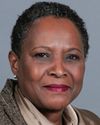Thank you.
Mr. Chairman, co-chairs, and members of the committee, I am very pleased to speak to you today about the sources of current health and immigration statistics concerning health care and official language minority immigration outside Quebec. I also take this opportunity to talk to you about projects currently underway. I will begin my presentation by talking about health care and then move on to immigration.
First and foremost, let us talk about statistical data on population health. Many sources of data on health are available at Statistics Canada. One of the most important is our survey on health care in Canadian communities, which began in 2000-2001. We work with a sample of approximately 133,000 respondents, which allows us to make projections for 133 socio-sanitary regions in Canada. This survey provided projections on health determinants, the state of health, and the use of health care services in Canada. Issues that are relevant to our study include mother tongue, knowledge of official languages, the language spoken at home, and the language spoken with one's doctor.
One important factor must be mentioned. The Statistics Canada Website contains the profile of health indicators for linguistic groups defined according to the mother tongue or the first official language spoken, in each of the provinces. In addition to the profiles in surveys for 2001 and 2003, it will be soon possible to access the profile for the 2005 cycle.
Many cycles of the General Social Survey at Statistics Canada have to date dealt with various themes and topics relating to health. Allow me to mention surveys on health, assistance and social support, smoking, social support and aging. In view of the limits of the sampling taken for several surveys, it was not possible to obtain statistics on francophones in each province. However, reliable projections can be made for all francophones outside Quebec.
The new Canadian survey on health measurements is the first Canadian survey that has allowed us to collect important information on population health, according to direct physical measures such as blood pressure, height and weight, blood samples, urine samples, and other tests used to gauge physical fitness, par example. The Canadian survey on health measures also produces a questionnaire to allow for the collection of information on different aspects of health and other demographic and socio-economic characteristics. Again, given the size of the sampling, which was approximately 5 000 people, age 6 to 79 years, projections are perhaps possible for all francophones outside Quebec, but this remains to be seen.
Health care concerns, of course, not only reside in health measures, but also on the supply and demand of services offered in the minority language. With respect to offer, the 2001 Canadian census contained a two-pronged question on the language used most often in the workplace and other languages used regularly in the workplace. This information is very useful to the extent that it is not only possible to become familiar with the potential pool of health care professionals, who while on the job, use French, but also allows us to know the pool of professionals who, even if they do not use French regularly, indicated that they were able to carry out a conversation in this language.
A study published by Ms. Louise Marmen and Sylvain Delisle from Statistics Canada in 2003 on health care services in French outside Quebec revealed the difficulties encountered by francophones outside Quebec with respect to obtaining services in French, resulting from the fact that in many provinces, francophones are proportionately higher in numbers in rural areas, whereas francophone specialists or other professionals likely to provide services in French, work mostly in large urban centres. The study also concluded that even in provinces where francophone communities are more likely to settle in urban areas, Francophones do not necessarily live in cities where there is very high percentage of francophone professionals.
The issue of the demand for services is directly related to offer. Many francophones who would like to receive services in French do not necessarily make the request and very often are unaware of the fact that the health care professionals they are dealing with have a knowledge of French. We are dealing here with the issue of the active offer of services in French.
On October 10th 2006, Statistics Canada began collecting data as part of the Post-censal survey on the Vitality of Official Language Minority Communities. The result of a partnership with eight federal government departments and agencies, it is the first time that we have conducted a survey of this scope dealing exclusively with official language minorities. This was a survey of 50,000 people that includes 17 modules on topics such as education, early childhood, linguistic trajectory from childhood to adulthood, access to health care in the minority language, cultural activities, linguistic practices in the workplace, sense of belonging and subjective vitality, just to name a few.
It is clear from reading the health care module that it will enable us, among other things, to gather relevant information on the importance of obtaining services in one's language, the level of difficulty obtaining services in one's language, reasons why people feel it is difficult to obtain these services in the language in which they were received, and the extent to which francophones request services in French. We will continue to gather data for the Post-Censal Survey on the Vitality of Official Language Minority Communities until December 2006, and the first statistics will be made public in October 2007.
Let's now move on to immigration statistics. We could not examine the issue of immigration in francophone minority communities without looking at the situation facing francophone minority communities where most members are born. The Survey on the Vitality of Official Language Minority Communities will provide a wealth of statistical data to help understand the challenges and obstacles facing francophone minority communities in Canada.
At Statistics Canada, the census is the only major source of data that enables us to provide information on French-speaking immigrants outside Quebec. The census paints a very clear picture of immigrant populations within the various francophone communities. Unfortunately, this source of data is not used enough. Bear in mind that the francophone sample from the Survey on the Vitality of Official Language Minority Communities is made up not only of people whose first language is French, but also of people whose first language spoken is French. But given how low their proportion within francophone minority communities is, it will be difficult to obtain accurate estimates of French-speaking immigrants outside Quebec.
One of the major Statistics Canada surveys on the settlement of immigrants in Canada is the Longitudinal Survey of Immigrants to Canada. In 2003, Statistics Canada published the results of the survey's first cycle. Approximately 12,000 of the some 164,000 immigrants aged 15 and over who arrived in Canada between October 2000 and September 2001 participated. They were interviewed for the first cycle of the study about six months after they arrived. We interviewed them again two and four years after their arrival. The results of the third cycle will be released next March.
The data gathered during the three-interview cycles will make it possible to study and gain a better understanding of the settlement process for newcomers. Given the relatively small sample at the end of the third cycle, some 8,000 respondents, the Longitudinal Survey of Immigrants to Canada does not, however, enable us to obtain reliable data on French-speaking immigrants outside Quebec. it is nevertheless clear that if steps were taken to oversample French-speaking immigrants, such a longitudinal study would provide a wealth of information on the settlement process for these immigrants in francophone minority communities.
In closing, I would like to say a few words about the graphs and statistics I distributed. Statistics drawn from the 2001 census show that using the first official language spoken criteria, there were some 53,000 French-speaking immigrants outside Quebec or slightly more than 1 per cent of the immigrant population. For the non-immigrant population, the proportion is 5 per cent. Bear in mind that these 53,000 immigrants whose first official language spoken is French live, for the most part in Toronto and Ottawa, where the respective number fluctuates around 11,000. What's more, in addition to these 53,000 immigrants whose first official language spoken is French, there are about 70,000 immigrants for whom we cannot determine whether English or French is their first official language spoken. Therefore, Statistics Canada created a residual category called “first official language spoken English-French”. Using information provided in response to the question on the other languages spoken on a regular basis in the home, we did note, however, that a large proportion of these immigrants tend to turn more towards English than French, even if they indicate that they have some knowledge of both official languages.
Nonetheless, we cannot write these immigrants off from the pool of potential French speakers, by assuming that they cannot contribute to the development of minority French-language communities. Though there is no established definition of a francophone immigrant, there are ways to push studies further in order to gain a better understanding of how allophone immigrants who speak both official languages can contribute to the expansion of French within francophone communities.
Thank you for your attention. I would be happy to answer your questions in both official languages.



